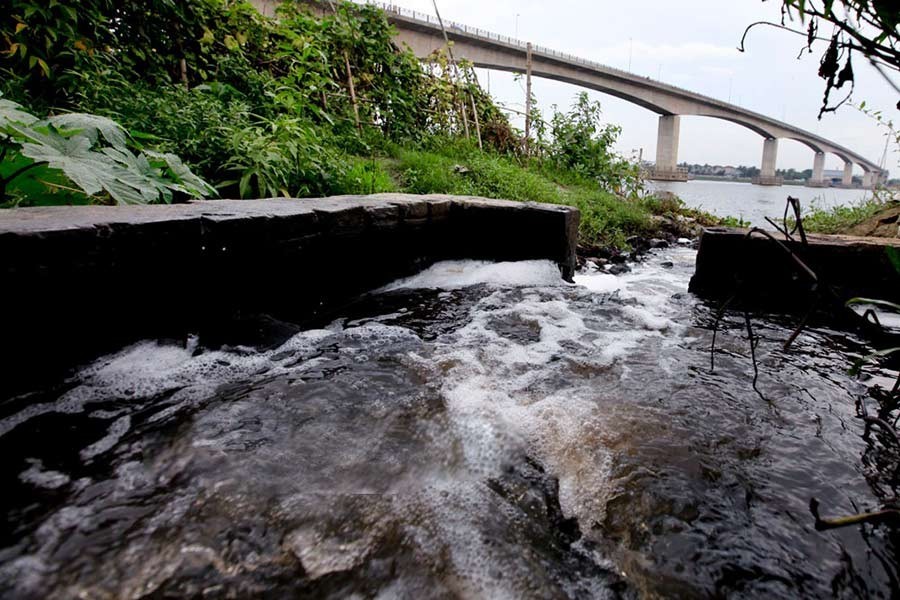The grim episode began with the very Buriganga River, the so-called lifeline of Dhaka. It had long been declared virtually dead, with its waters becoming unsuitable for the survival of all kinds of organism. The saga was followed by the three other rivers surrounding the capital, i.e. the Balu, the Turag, and the Bangshi --- as well as the Shitalakkhya and the Dhaleshwari. The grim turn of being in their death throes has lately included the Dhaleshwari near Savar. As a recent photograph in the print media shows, its water has already started changing colour. It's now bluish black, as has been seen in the case of the Buriganga. The moribund state of the Buriganga is squarely blamed on the tannery enclave in Hazaribagh in old Dhaka. With water and air pollution caused by the tannery reaching an unbearable level, steps were taken finally to shift it to Savar. The process began in 2014, and still continues.
As the tannery owners continue to drag their feet, the factories concerned are found make-doing with the allegedly incomplete infrastructure in the new location. In a sloppy situation like this, there is hardly any hope of full-throttle start of the tannery activities in the estate in the near future. Meanwhile, the nearby river, the Dhaleshwari is being made to bear the brunt.
River saving activists, and the environmentalists in general, blame the messy start of the new tannery estate for the present plight of the Dhaleshwari. They warned earlier that the waste materials left by the activities of tanning rawhide would flow straight into the nearby Dhaleshwari, if a fully functional central effluent treatment plant (CETP) was not installed there. They emphasised the start of the device from the very beginning in order to keep the river water free of chemical wastes. The authorities had apparently paid little heed to the imperative. With the CETP not working as expected, the tanners had few options except releasing the untreated water into newly dug drainage channels to carry the effluent-mixed water into the river. According to environmental activists, if the practice is not stopped forthwith, the Dhaleshwari may have to meet the same fate as has been seen in the case of Buriganga.
Already dampening news reports and eye-witness accounts have started troubling many people. They include mainly the local residents and advocacy groups. Few of today's new-generation people will be able to visualise the transparent and tranquil water that used to flow by the river 30-35 years ago. This river was used to the spectacle of women taking bath in its water and carrying it home for domestic use in pitchers. The scene of sailboats moving in rows in the mid-river might seem surrealistic. The Savar tannery estate has yet to go into full operation. But the toxic and anti-environment detritus from rawhide processing has already started taking its toll on the Dhaleshwari and the nearby wetlands.
The people in greater Savar have seen the Dhaleshwari in the past. Finding it in its present state, they feel like being thrown into a state of utter shock. This scribe had the opportunity to attend an art camp held on the bank of the river about three-and-half decades ago. The event was also attended by a few foreign artists along with the local ones. All through the day-long event, the foreigners were found glued to the tranquil beauty of the river. At one point, they changed their riverside venues, and shifted to the mid-river 'dingi' boats with their hand-held canvas sketching out the 'otherworldly' beauty of the river. If by sheer chance they return to the Dhaleshwari bank today, the foreigners might become curious to know whether any terrible catastrophe had occurred to the river upstream.


